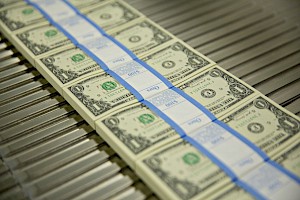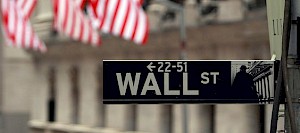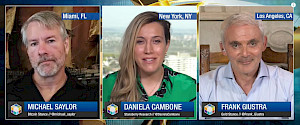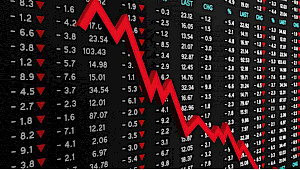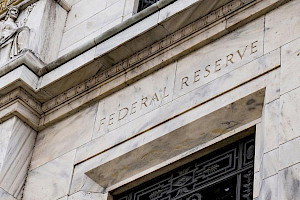Why money isn’t really money any more — and what you need to do with yours to keep it safe
August 15, 2023Originally published in The Toronto Star on August 8, 2023 as contributing columnist
Money ain’t what it used to be.
I find most people don’t know what money actually is, how it works and who actually owns it. That ignorance could prove to be bad news for your wallet.
Historically, it has been a medium of exchange, a unit of account, and a store of value.
As a medium of exchange, it allows us to buy and sell stuff. Its unit of account function is a prerequisite for measuring the value of goods and services and for the calculation of debts and credits across different currencies. The store of value function is its ability to retain its value over time.
In the simplest terms, money is based on a belief system and trust.
Historian and author Yuval Noah Harari explains it best. “Money wasn’t a technical evolution — it was a mental revolution. Seashells and dollar bills only have value in our common imaginations. Their worth is not inherent in the chemical structure of the shells and paper, or their colour, or their shape. Their worth is only derived in the minds of the people who use them,” writes Harari. “So why does money work? Why would anyone be willing to give up the most fertile agricultural grounds in exchange for some cowry shells? And why are you willing to flip hamburgers, sell used cars, or sit at a desk for 40-plus hours a week for a few pieces of coloured paper? People are willing to do such things when they trust the figments of their collective imagination. Trust is the raw material from which all types of money are minted … Money is accordingly the most universal and most efficient system of mutual trust ever devised.”
It took a mere 20 years for policymakers to turn that imagination of what money is into a hallucination. And in their management of monetary policy, they have lived up to their reputation as the least trustworthy groups of people known to man, as noted in the Ipsos Global Trustworthy Index 2021.
Many people are unaware that when you make a deposit in a bank you are no longer the legal owners of this money. Instead, you are just another creditor the bank owes money to. If that weren’t scary enough, bail-ins have replaced bailouts for “too big to fail” banks under U.S. Dodd-Frank Act. A bail-in is financial relief for banks that are in danger of going bankrupt. The relief comes from cancelling some or all of a bank’s debt by reducing the value of its shares, bonds, and uninsured deposits — deposits which are yours.
Banks are only obligated to keep a fraction of deposits on reserve
Additionally, the money representing the sum of all deposits doesn’t exist. Under the “fractional reserve” system that banks operate under, if enough depositors tried to withdraw their funds all at once, the bank would fail and all deposits over $250,000 (the amount covered by FDIC insurance) would go to money heaven. Of the roughly $14 trillion in circulation (according to M2 money supply) only 11 per cent is what you can stuff in your mattress as physical cash. The rest of it is a digital abstraction.
Under this system banks are only required to keep a fraction of deposits on hand. That means banks hold a percentage of your money lending out the rest or, more commonly, investing it to grow their total available funds allowing banks to make loans to stimulate the economy.
For nearly 100 years, the Federal Reserve set the reserve requirements on transactional accounts, such as chequing and savings, at 10 per cent. So, if you had $10,000 in your savings account, your bank could use $9,000 of it to generate profits. That means that for every $1 left in reserve, you can estimate that banks will create $10 of new money.
Scroll forward to 2020. As a response to the COVID-19 pandemic, the Federal Reserve removed all reserve requirements for transactional accounts and have kept them at zero to this day. Technically, banks can now create an endless amount of new credit without having any additional deposits as backing. The official reason for this move was that money is better used if freed up to lend, stimulating the economy.
The reality is that with global debt now over $300 trillion, we are at the end of a 70-year debt supercycle and reaching the limits of debt creation. It seems banks had to find an additional way to keep the game going. We should not be surprised by this fact. The Fed, which regulates the banking system, is nothing more than a cabal of government-backed bankers preoccupied with their own interests.
Two decades of reckless monetary policy by the Fed resulted in $9 trillion of newly printed money which in turn fuelled the inflation we are seeing today. Inflation, in turn, devalues your money and can otherwise be seen as an invisible tax. Not a good thing unless you were already wealthy enough to access all the free money banks were giving away the past two decades. The wealthy used that money to buy hard assets — stocks, real estate, art. The less wealthy have been left out in the cold.
Bitcoin is like a casino chip: good for little outside a casino
Asset prices went through the roof and were inaccessible to most people while their savings lost much of their purchasing power — a double whammy. In other words, cash began to resemble trash. Furthermore, protracted loose monetary policy has created an environment where it became impossible to ascribe value to any asset class. As we saw with many asset prices, almost everything was mispriced. Money lost its meaning as a store of value and unit of account.
If the meaning of money weren’t murky enough, along came bitcoin and crypto. Bitcoin was introduced after the 2008 financial crisis as a response to the irresponsible money printing (qualitative easing) by the Fed. Bitcoin’s originally stated purpose was as a replacement for fiat currency (money which is only backed entirely by the full faith and trust in the government that issued it and not by gold) something that had a fixed supply and therefore couldn’t be printed at will. That function didn’t prove to work and ever since, the bitcoin crowd regularly comes up with different possible uses yet can’t quite agree on its main purpose. As I have said repeatedly, bitcoin is an asset class in search of a purpose. Regardless, the bitcoin ‘maxis’ continue to hail it as a middle finger to fiat currencies in general, adding even more confusion as to what actually constitutes money.
Author and historian James Rickards cuts through all the hype. “Bitcoin is not a digital representation of something that otherwise exists. Instead, it is a pure digital record of something that does not otherwise exist. It resembles a casino chip, which is an asset that can produce wealth or be lost but is not good for much outside the walls of the casino.” He concludes, “bitcoin is the ideal asset for an immersive post-rational world.” Amen to that.
Rickards also warns, “bitcoin could also destroy the confidence in existing currency systems without fully displacing them. It is a hallucinogenic in the sense that every user sees something different.”
And if bitcoin didn’t muddy the waters enough, consider the soon-to-be introduced Central Bank Digital Currencies (CBDC) which are being contemplated by 114 countries including Canada and the U.S. They won’t differ much from currencies except that they will potentially allow central banks to deposit and withdraw monies from your account and might be used to incentivize or punish your spending behaviour.
Finally, I would be remiss if I didn’t mention gold, the only money that has managed to survive man’s inherent nature to destroy it throughout history. Today, an ounce of gold roughly buys a gentleman’s fine suit much like it did 150 years ago and much like it bought a fine Roman tunic 2,000 years ago. It retains its store of value feature like nothing else. Gold is used as a unit of account and a medium of exchange by nations and central banks — those same central banks that have been accumulating it at an accelerating pace over the past 13 years.
So much has changed over such a short period of time. As a result, our money now has a lot less purchasing power, is a lot less trustworthy, and its functions are a lot less clear. By all measures, it seems money’s only remaining function is as a medium of exchange. Keep that in mind as you plan what to do with your what-used-to-be-money.
That said, keep a cash position as it’s always useful to have liquidity. But consider placing the rest in hard assets that can’t be arbitrarily devalued by governments and central banks.




